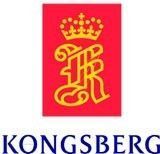-
StatusCompleted
-
Status date2016-10-18
The main objective for the program was to develop and qualify the Second Generation Command Receiver. The starting point for the activity was the already established first generation Command Receiver. This was essentially a blueprint copy of the licensed product from Thales Alenia Space (TAS). To be able to provide improved functionality (frequency flexibility), improved performance and in general product and parts independence from TAS, the development of the 2nd Generation Command Receiver was initiated.
The main new feature of the second generation command receiver is the in orbit programmable receiving frequency. This opens for improved possibilities for solving interference issues during deployment and on-station operation. In particular this is an advantage for Electrical Orbit Raising. In addition, this opens for a more efficient satellite fleet management and more flexible use of satellites in new positions during their lifetime.

A key issue for the development has been to be able to implement in-orbit frequency agility and at the same time improve the interferer immunity. The results from the analysis and tests show that the goal has been achieved and excellent performance is demonstrated. The frequency agility capability will allow the on-board computer to set any Ku-band input frequency within a 770 MHz band during in-orbit mission. For C-band the agile bandwidth is 400MHz.
The Second Generation Command Receiver offers in-orbit programmable setting of the receiving frequency. This is combined with high interference immunity. With this combination the operator will be able to solve interference issues. This can both be during on-station operation and during the LEOP phase, in particular if electrical propulsion is used. Furthermore, the flexible frequency setting opens for a more efficient use of the complete satellite fleet, where one satellite in the future can be moved to new positions with other frequency allocations.
Input Frequency Band
The Command Receiver is designed for reception of C-, Ku- and Ka-band. The Unit can be configured for single, dual or on-board selectable frequency.
The Ku-band receiver is designed with an input bandwidth up to 770MHz. (Type 1: 12750MHz to 13500MHz and type 2: 13750MHz to 14520MHz.)
The C-band receiver is designed to cover the band from 5700MHz to 6725MHz.
Frequency Agility
The command receiver is implemented with frequency agility capabilities. This function will allow the on-board computer to set any input frequency during in-orbit mission within 770MHz band for Ku-band and 400MHz for C-band
Input Frequency Offset
A frequency shift of ±22ppm and a change rate of ±1.7ppm/s can be accommodated.
Sensitivity
Dynamic range: -50 dBm to -112 dBm
Close-in Interferer Immunity (at minimum input level)
±1.2 MHz from nominal carrier frequency: -100dBm
±1.5 MHz from nominal carrier frequency: -82dBm
±2.0 MHz from nominal carrier frequency: -65dBm
Modulation Format of RF input Signal
PCM (NRZ-L)/BPSK/FM signal format, Unit initial configurability:
Subcarrier: 8 kHz or 16 kHz
Data rate: 250, 500, 1000, 2000 or 4000bps
4kHz to 100 kHz ranging tones
FM deviation of ±400kHz ±10kHz
SYSTEM ARCHITECTURE
The Unit design is prepared for receiving commands and ranging signals at C-band, Ku-band and Ka-band. The functional block diagram of the Unit is presented in the figure below

The Unit is using a dual frequency conversion architecture where both IF1 and IF2 are at fixed frequencies. The frequency conversion is based on dual frequency inversion, i.e. both LO frequencies are above the mixer input frequency.
The following development plan has been followed during the program:
PDR – Preliminary Design Review
This milestone concluded the initial work with the unit optimization and critical design
CDR– Critical Design Review
This milestone concluded the detailed design and development as well as the supporting performance and reliability analysis. This also gave the starting point for the manufacturing of the EQM
EQM TRB – Test Review Board / Final Review
After the completion of the EQM test campaign, the TRB was successfully held.
After completion of the program the activity was continued through a CCN. This included the formal qualification of a C-band Command Receiver with customer specific interface.
A delta CDR and TRB have been successfully held.
The program is now completed with the qualification of the Command Receiver EQM both in Ku-band and C-band configuration.



